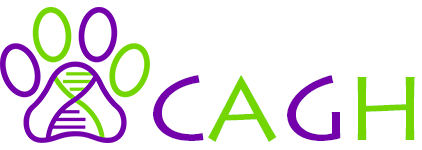Authors Thomas Marchant (1), Elisabeth Dietschi (2), Ronan Harrington (1), Michaela Drögemüller (2), Ulrich Rytz (3), Tosso Leeb (2) & Jeffrey Schoenebeck (1)
Affiliations 1. The Royal (Dick) School for Veterinary Studies and Roslin Institute, The University of Edinburgh, Easter Bush, Midlothian, EH25 9RG, UK. 2. Institute of Genetics, Vetsuisse Faculty, University of Bern, 3001 Bern, Switzerland. 3. Department of Clinical Veterinary Medicine, Division of Small Animal Surgery, Vetsuisse Faculty, University of Bern, 3001 Bern, Switzerland
Presentation Type Talk
Abstract
In domestic dogs, the “flat-faced” brachycephalic head shape is a risk factor for developing the respiratory defect, Brachycephalic Obstructive Airway Syndrome (BOAS). As the popularity of breeds such as the French bulldog continues to increase in the UK, so too are the expected incidences of BOAS. For this reason, we became interested in the Norwich terrier, a non-brachycephalic breed which presents with Upper Airway Syndrome (UAS), a condition highly reminiscent of BOAS. Here, we have studied this single breed to identify genetic association(s) with UAS. Pathological assessments and grading from laryngoscopic examinations held at the Vetsuisse Faculty of the University of Bern, were used as phenotypes in conjunction with microarray genotypes to perform GWAS. In total, 233 Norwich terriers were examined. We identified the same QTL on canine chromosome (CFA) 13 to be associated with the abnormal positioning of laryngeal cartilage and everted saccules in the dogs most severely affected by UAS. We phased genotypes at the CFA13 QTL to conduct haplotype mapping, which led us to define a 413 kb critical interval which encompasses a single positional candidate gene. The derived haplotype within this interval is overrepresented: it is found to be homozygous in 61 of 81 (74%) severely affected cases. In contrast, this homozygous haplotype was identified among 7 of 86 (8.1%) mild/unaffected controls. We have resequenced four dogs representing phenotypic extremes to sixteen-fold depth to identify putatively causal variants. We will provide an update to this ongoing project, which is expected to guide Norwich terrier breeding and inspire additional exploration of the CFA13 locus to improve animal welfare.
